Uncategorized
The Girl on a Bike vs The Rally World
Vanessa Ruck, aka The Girl On a Bike, is an adventure-loving go-getter who finds fulfillment in dirt bike challenges. Born in England, Vanessa’s life has always been about getting involved in different physical outdoor activities and keeping fit. Even with a master’s degree and a full-time job, Vanessa looked for ways to stick to her underlying thirst for adrenaline and passion: Taking road trips, kitesurfing, cycling, and climbing were all staples on her weekend schedule. Evening wakeboard sessions were also as common as the 16-mile weekday bike commute to and from work.
But everything changed for Vanessa in March 2014, when she had a horrific accident—getting hit by a car while riding her bicycle from work to. That unfortunate incident resulted in severe injuries on Vanessa’s hip and shoulder, spelling countless steroid injections, seven operations, full shoulder reconstruction, and six hip surgeries. The accident made Vanessa ask the important questions of life and helped her rekindle her interest in motorcycles.
Although she had had a Lifan Enduro 250 motorbike shipped in while she lived in the Bahamas, the accident made biking one of the new ways for Vanessa to continue her adrenaline-seeking life—especially as motorcycles only require a good balance and coordination to ride. Vanessa found particular interest in dirt bikes and got the Yamaha WRF250, but later had to change the 125kg Yamaha dirt bike to the 95kg KTM 200 because of the effect of the weight on her hip.
Vanessa is now fully engrossed in the world of dirt bikes. Riding her 2020 Husqvarna 250i followed by the Honda CRF 450 RX, she has now ridden in Andorra, Spain, Croatia, Italy, Germany, Bahamas, Wales, and many other countries. Today, even as her rehabilitation continues, Vanessa isn’t relenting in her thirst for adventure. She has progressed to hard enduro and has ridden in the British Extreme Enduro Championship as well as finished the Romaniacs Iron Class. She has also entered the hard enduro series and rally racing, taking part in the Qatar International Baja and Rallye du Maroc.
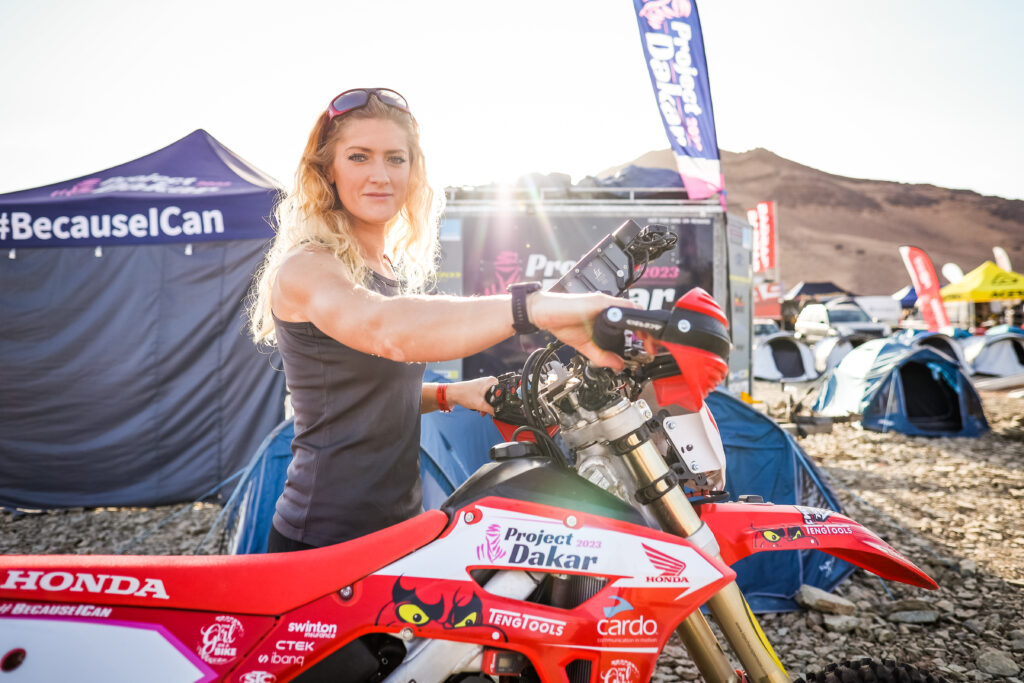
In this interview, Vanessa Ruck talks about her journey in rally racing.
Your first foray into rally racing was the Qatar International Baja. How was the race?
Vanessa: Before Qatar, I had seven weeks off the bike because of my recent shoulder injury, so I had to have steroid injections and lots of physio to be able to get back on the bike. I rode my Honda CRF 450 RX, which is a rally/enduro bike, for about three hours before leaving for Qatar. And then in Qatar, I had to borrow a Beta 430 RR because there was no time to ship the bike to Morocco for the next rally. All I had was a little shakedown ride and then right off to the start line. I liked the Beta 430 RR, and I felt good on it, but it had a standard suspension which didn’t quite work for me. Still, I managed it.
Qatar International Baja is a three-day Baja-style race in the desert with roadbook navigation, but it was absolutely brutal. The average temperature was 45-55 Celsius, and only about 45% of riders finished the race. I was lucky to be racing with Patsy Quick and the Desert Rose team, but I’ll tell you, Patsy Quick is a tough cookie—she put me through my paces! It was my first time in the dunes, too.
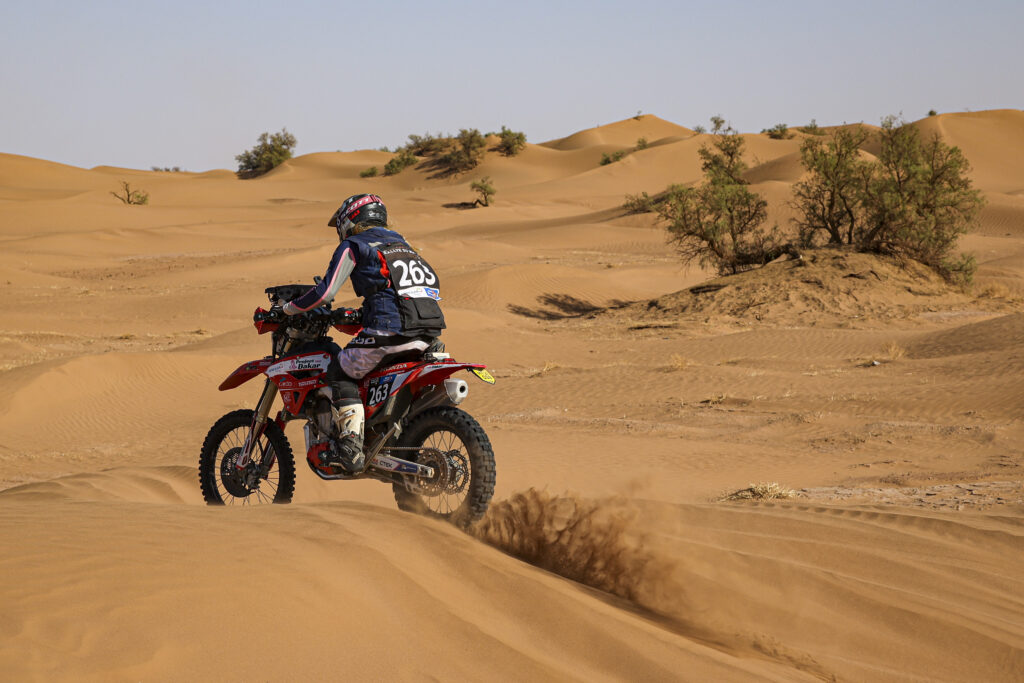
Qatar has a somewhat barren landscape, so navigation was rather tricky – it was hard to get your bearings without trees, bushes, or houses to orient, you had to follow a crisscross of tracks and forks, and if you got lost, it’d take you a while to find your way again. It was intense, but it was an excellent training practice in terms of endurance and prep for Rallye du Maroc.
One day during the race, we had 80 kilometers of dunes ahead of us, and just 500 metres into the dunes, I thought I wouldn’t survive that section. However, I simply had to work harder, and when I had a scary near-miss in the dunes, I just gave myself a hard pep talk. I reminded myself to stay focused, and eventually, I did it. I came second in the Women’s Class in Qatar, right after Patsy. I felt proud as it was my first rally race and I threw myself into the deep end with that one.
Your next race was Rallye du Maroc – why did you choose this one?
Vanessa: I chose Rallye du Maroc because it’s the best race to participate in for any rider that wants to race the Rally Dakar. I’m incredibly grateful for the Qatar experience because if it wasn’t for that, I would have had a much tougher time in Morocco. If COVID and money weren’t an obstacle, I would have gone with a more sensible approach like doing mid-level rallies such as Hellas first.
But it was what it was. Also, having done Romaniacs earlier this year, I’d had a bit of a confidence boost. I prepared myself as best as I could with what I had. It was a “let’s tackle this, let’s go” kind of situation.
How was Rallye du Maroc?
Vanessa: I learned that all sand is neither the same nor equal. Qatar taught me a lot, but Maroc was brutal, horrific, incredible, emotional, amazing, and tough! It was one epic adventure. My teammate, Tim, and I rode the rally together. We both had airbag vests that paid for themselves several times over – I had a big off and I’m pretty sure I wouldn’t have walked away if it wasn’t for the airbag vest.
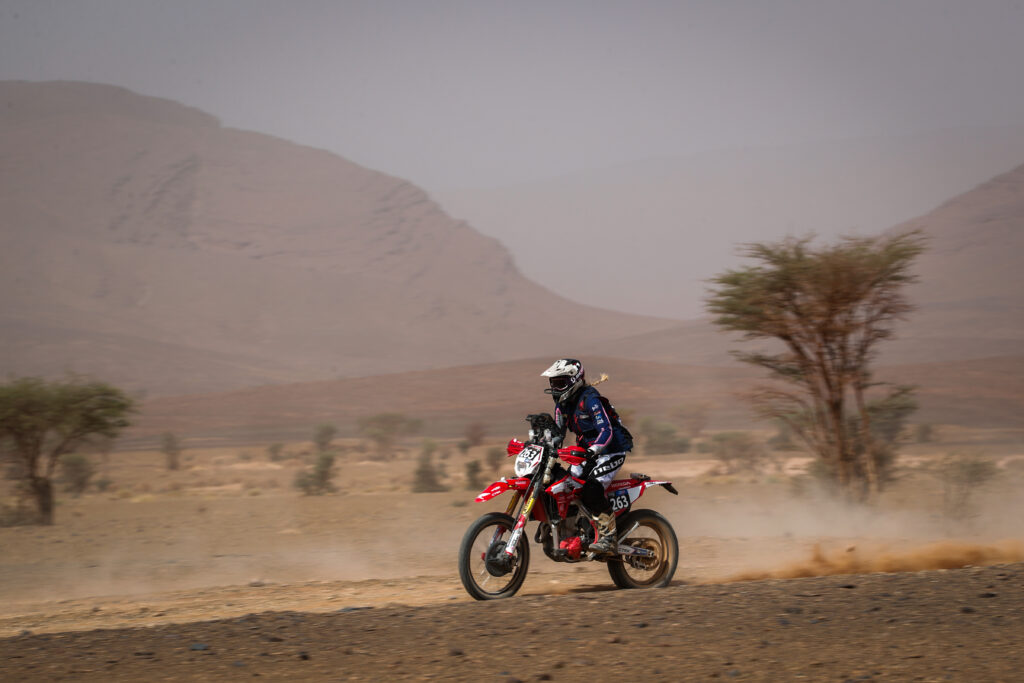
We tried to tackle the rally one waypoint at a time. There were so many huge rocks, boulders, holes, and lumps that threatened to throw you off all the time. Rallye du Maroc was an event where I had to have a laser-sharp, consistent focus throughout. I was riding rough terrain at a racing speed while following a paper chart. Needless to say, you’ve got to be 100% focused under conditions like that.
Our longest day was 13 hours on the bikes doing 730 kilometers. It was a pretty long day, coming back in pitch-black darkness. Moroccan roads at night are pretty scary. When I got back to the bivouac, I just burst into tears, because it had been brutal. Sleep deprivation was tough, too. The bivouac had a rocky, stony floor, so sleeping in a tent was hard. You want to recover after each day, but the bivouac is noisy as hell 24/7, and getting proper rest was difficult. We had to adapt and cope with so many things, so it was a big journey of discovery and a lesson in what I needed to improve.
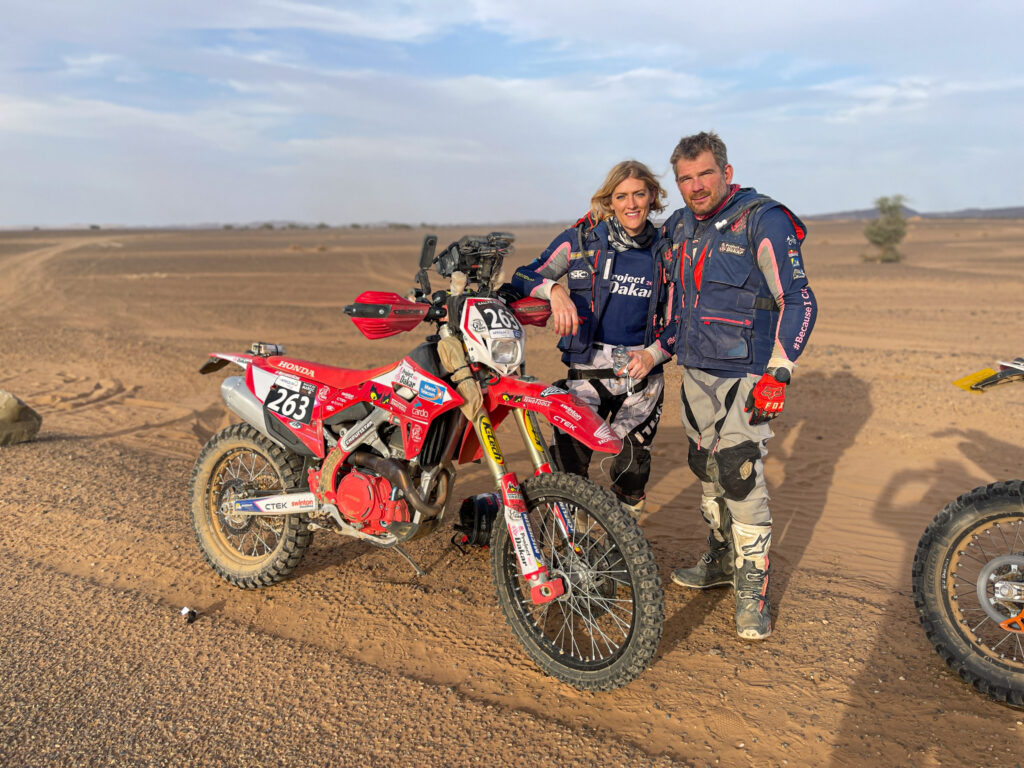
Unfortunately on Day 4, my bike decided to stop working late in the afternoon. We tried everything we could but, in the end, I got a sunset helicopter ride back to the bivouac and my bike had to be recovered from the desert. The bike got back to the bivouac at 4 am, and despite our mechanics doing their very best, we just couldn’t revive the bike.
In the morning, I got up prepared to race, but the bike just couldn’t be fixed. I’m still waiting to get the exact diagnosis, but that was the end of my rally. It was devastating, but at the end of the day—with my reconstructed body and my history—I’m proud I took part in the Morocco race. I put in the work and I did my best, and if it wasn’t for the mechanical issue, I would have finished it.
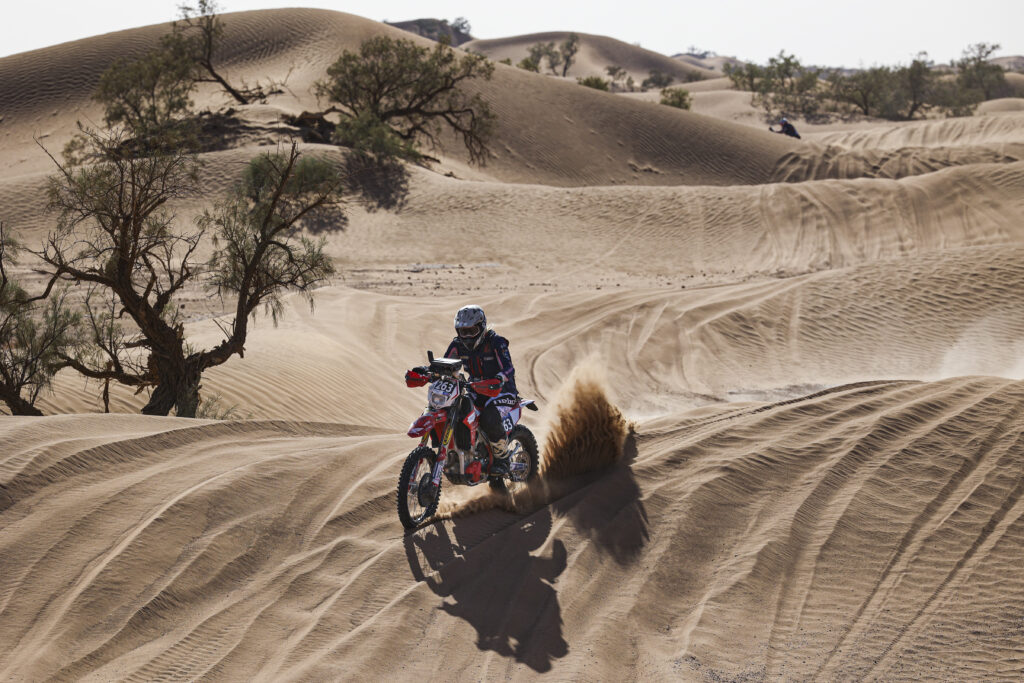
What’s next for you?
Vanessa: I’m aiming for the Dakar rally, but I’m not putting the year on it just yet. It will be a long journey requiring lots of training, another Rallye du Maroc, and more affordable rallies in between.
I’m trying to be realistic – I’ve got a long way to go, but I’m willing to put in the miles. For me, getting into rally racing was intimidating. I had very little roadbook training, and I think it’s also one of the biggest blockers for other people.
People are always concerned about things like: How will I navigate? Do I need a rally bike? The reality, however, is that these Enduro Cup categories are a great way to get into rally. You just bolt on the roadbook navigation and go! It’s a much cheaper and easier way to try things out, and the only way to do it is to give it a go.
For more inspiration, check out Vanessa’s Instagram page: The Girl on a Bike

Pingback: Rallye du Maroc: Can Quintanilla Win the Dakar? // Cross Country ADV
Pingback: Tunisia Desert Challenge // Cross Country ADV